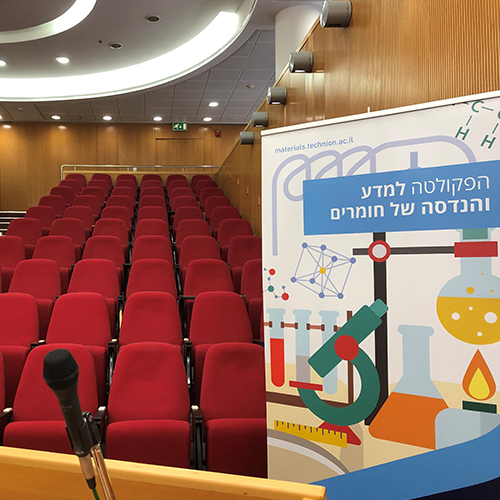
19/07/2025
אודיטוריום ע"ש דויד וואנג, בניין מידן, קומה 3
Ms. Sasha Khalfin PhD candidate
Department of Materials Science and Engineering, Technion Israel Institute of Technology Haifa
B.Sc. in Material Science and Engineering and B.Sc. in Chemistry -2018.
Double perovskites are considered for future photovoltaic and electro-optic applications as a toxic-free alternative to lead halide perovskites. Improving optical properties in the case of double perovskites with symmetry-forbidden optical transmission, like Cs2AgInCl6, can be achieved through alloying or doping; or possibly by the development of low-dimensional materials. In this work, we focus on the ability to control Cs2AgInCl6 double perovskite nanocrystals’ optical properties by changing their morphology from nanocubes to nanoplates. In addition, their defect-tolerance and self-healing properties are also investigated.
To study self-healing properties, we conducted experiments in-situ TEM. Once surface passivation in the form of organic ligands is removed, void dynamics changes to enable annealing of the voids and self-healing of the crystal. The study suggests that tuning of organic ligand density influences structural stability and crystal defect tolerance in double perovskites. In order to study and control perovskites’ optical properties, we develop a novel colloidal synthesis of Cs2AgInCl6 two-dimensional nanoplates with dominant silver metallic decorations. We hypothesize a dominant plasmonic character for the resulting Ag-Cs2AgInCl6 hybrid nanoplates due to a localized surface plasmon resonance, as demonstrated by its uv-vis absorbance and EELS measurement. After deposition on a substrate, the hybrid nanoplates transform into larger nanosheets. We thus hypothesized they could serve as building blocks for assemblies of functional surfaces.


